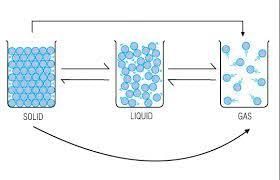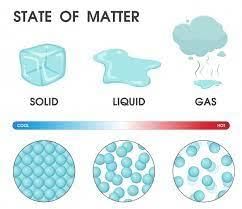Class 4 Exam > Class 4 Tests > Test: Solids, Liquids & Gases- 2 - Class 4 MCQ
Test: Solids, Liquids & Gases- 2 - Class 4 MCQ
Test Description
10 Questions MCQ Test - Test: Solids, Liquids & Gases- 2
Test: Solids, Liquids & Gases- 2 for Class 4 2025 is part of Class 4 preparation. The Test: Solids, Liquids & Gases- 2 questions and answers have been prepared
according to the Class 4 exam syllabus.The Test: Solids, Liquids & Gases- 2 MCQs are made for Class 4 2025 Exam.
Find important definitions, questions, notes, meanings, examples, exercises, MCQs and online tests for Test: Solids, Liquids & Gases- 2 below.
Solutions of Test: Solids, Liquids & Gases- 2 questions in English are available as part of our course for Class 4 & Test: Solids, Liquids & Gases- 2 solutions in
Hindi for Class 4 course.
Download more important topics, notes, lectures and mock test series for Class 4 Exam by signing up for free. Attempt Test: Solids, Liquids & Gases- 2 | 10 questions in 15 minutes | Mock test for Class 4 preparation | Free important questions MCQ to study for Class 4 Exam | Download free PDF with solutions
Test: Solids, Liquids & Gases- 2 - Question 1
Which of these is a characteristic property of gases?
Detailed Solution for Test: Solids, Liquids & Gases- 2 - Question 1
Test: Solids, Liquids & Gases- 2 - Question 2
The conversion of matter from solid state to liquid state is called ________.
Detailed Solution for Test: Solids, Liquids & Gases- 2 - Question 2
Test: Solids, Liquids & Gases- 2 - Question 3
Read the statements carefully and choose the correct option.
Statement A: In solids the molecules are packed the closest together.
Statement B: In gases the molecules are spread out the most.
Statement A: In solids the molecules are packed the closest together.
Statement B: In gases the molecules are spread out the most.
Detailed Solution for Test: Solids, Liquids & Gases- 2 - Question 3
Detailed Solution for Test: Solids, Liquids & Gases- 2 - Question 4
Detailed Solution for Test: Solids, Liquids & Gases- 2 - Question 5
Test: Solids, Liquids & Gases- 2 - Question 6
Which process would be used to separate sugar from a sugar-water solution?
Detailed Solution for Test: Solids, Liquids & Gases- 2 - Question 6
Test: Solids, Liquids & Gases- 2 - Question 7
What happens to the rate of diffusion when a substance changes from a solid to a liquid?
Detailed Solution for Test: Solids, Liquids & Gases- 2 - Question 7
Test: Solids, Liquids & Gases- 2 - Question 8
What is the outcome when a substance undergoes condensation?
Detailed Solution for Test: Solids, Liquids & Gases- 2 - Question 8
Test: Solids, Liquids & Gases- 2 - Question 9
Which of the following is an example of an insoluble substance in water?
Detailed Solution for Test: Solids, Liquids & Gases- 2 - Question 9
Detailed Solution for Test: Solids, Liquids & Gases- 2 - Question 10
Information about Test: Solids, Liquids & Gases- 2 Page
In this test you can find the Exam questions for Test: Solids, Liquids & Gases- 2 solved & explained in the simplest way possible.
Besides giving Questions and answers for Test: Solids, Liquids & Gases- 2, EduRev gives you an ample number of Online tests for practice
Download as PDF





















